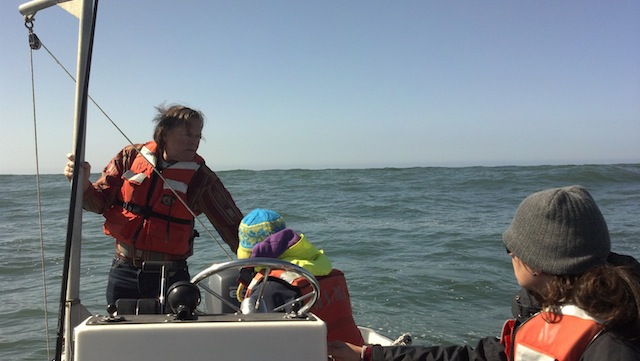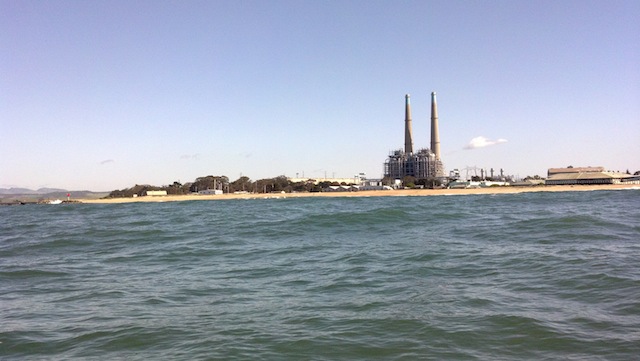By Diane Wyse, Physical Oceanography Lab
Last week, students from the Chemical Oceanography class took advantage of many of the resources at Moss Landing Marine Labs to perform an analysis of dissolved oxygen throughout the seawater intake system. The system supplies seawater from offshore to the MLML aquarium (up on “the hill,” at the main campus of the lab), the live tanks at Phil’s Fish Market, MBARI’s Test Tank, and to SLEWTHS.
For the first stop of the day, students Kristin Walovich and Ashley Wheeler joined professor Kenneth Coale and teaching assistant Diane Wyse in loading up a whaler with supplies for sampling. The team set out to collect water offshore at 17 m, around the depth that water is brought into the system. The whaler, one of three available to students through the MLML Small Boats, was equipped with an aluminum pulley system to collect water at depth.


The second stop on the seawater sampling adventure was at the MLML Pumphouse, where unfiltered seawater passes through the instruments of the data acquisition system. A variety of oceanographic parameters, including temperature, salinity, turbidity, and dissolved oxygen concentration, are measured and shared with the public through the MLML Public Data Portal.
Finally, the sampling team headed up the hill to the MLML aquarium, and collected and pickled water that is pumped in for the marine flora and fauna kept for thesis research and class projects. The “pickling” step involves addition of reagents to the glass collection bottles before they are sealed to prevent further biological processes from altering the concentration of dissolved oxygen in the sample. The pickling process was applied in the same fashion, immediately after collecting, to all of the samples taken that day.

Back at the MLML Environmental Biotechnology Lab students performed a Winkler titration to determine the concentration of dissolved oxygen in the samples. The data from this class experiment can be used to help calibrate the oxygen optodes on the Public Data Portal system.



